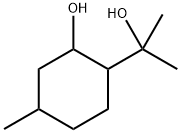p-Menthane-3,8-diol: mechanism of action, applications and safety
Oct 16,2023
General Description
p-Menthane-3,8-diol (PMD) is a natural insect repellent derived from lemon eucalyptus leaves. It repels insects through its strong odor and by interfering with their sensory receptors. PMD is widely used in insect repellents to protect against mosquito-borne diseases like malaria and dengue fever. It is also utilized in the fragrance and flavor industry for its fresh, lemon-like scent and can enhance the taste of food and beverages. Additionally, PMD has antimicrobial properties, making it suitable for personal care products like shampoos and body washes. p-Menthane-3,8-diol is considered safe for use on human skin and is recommended by health authorities for preventing insect bites.
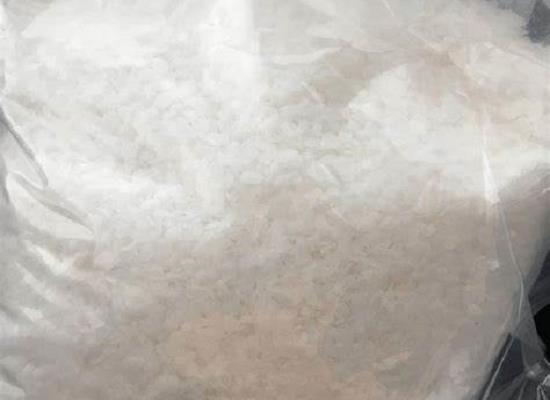
Figure 1. p-Menthane-3,8-diol
Mechanism of action
p-Menthane-3,8-diol is a natural insect repellent that is derived from the leaves of the lemon eucalyptus plant. It is widely used as an effective alternative to synthetic insect repellents due to its ability to repel a variety of insects, including mosquitoes, ticks, and other biting insects. The mechanism of action of PMD as an insect repellent lies in its strong odor and chemical composition. p-Menthane-3,8-diol has a distinctive smell that insects find unpleasant, acting as a deterrent. When applied to the skin or clothing, it creates a barrier that insects are inclined to avoid. This makes it an ideal choice for individuals seeking protection against insect bites, particularly in areas where insect-borne diseases are prevalent. Furthermore, p-Menthane-3,8-diol has been found to interfere with the sensory receptors of insects, disrupting their ability to locate and target potential hosts. It confuses their sensory mechanisms, making it difficult for them to detect the presence of humans or animals. This mechanism of action significantly reduces the risk of insect bites and can provide long-lasting protection. 1
Applications
p-Menthane-3,8-diol is a versatile chemical compound derived from the leaves of Eucalyptus citriodora. It is widely used in various applications due to its unique properties and benefits. One of the main applications of PMD is as an active ingredient in insect repellents. It has been proven effective in repelling mosquitoes, ticks, flies, and other insects, making it an essential component in products designed to protect against insect-borne diseases such as malaria, dengue fever, and Lyme disease. PMD offers a natural alternative to synthetic repellents and is considered safe for use on human skin. Additionally, PMD finds application in the fragrance and flavor industry. Its fresh, lemon-like scent makes it a popular ingredient in perfumes, soaps, lotions, and household cleaning products. It can also be used to enhance the flavor of food and beverages, providing a refreshing and citrusy taste. Furthermore, PMD has antimicrobial properties, which contribute to its use in personal care products like shampoos, conditioners, and body washes. It helps inhibit the growth of bacteria and fungi, promoting hygiene and preventing the occurrence of infections. In summary, p-Menthane-3,8-diol is a multipurpose compound with diverse applications. Its effectiveness as an insect repellent, pleasant fragrance, flavor enhancement capabilities, and antimicrobial properties make it a valuable ingredient in various industries. 2
Safety
The use of p-Menthane-3,8-diol is a significant recommendation by health authorities for preventing mosquito-borne diseases. All products claiming to repel mosquitoes that are sold in Australia must be registered with the Australian Pesticides and Veterinary Medicines Authority. While approximately 100 commercial products are registered as insect repellents, the number of active ingredients used in these formulations is relatively limited. The most common ones are N, N-diethyl-meta-toluamide (DEET), picaridin, p-Menthane-3,8-diol (PMD), and a range of plant-derived products (e.g., lemon eucalyptus, tea tree oil, citronella). Research indicates that each of these active ingredients varies in their duration of mosquito bite prevention. Health authority recommendations are based on this research, but inconsistencies between the recommendations and available repellent formulations and their concentrations of active ingredients can cause confusion within communities. Conflicting information exists between academic research, marketing efforts by manufacturers, and advice provided by overseas health authorities. A review of the current recommendations from the NSW Department of Health regarding the selection and use of insect repellents has been conducted, taking into account recent studies and currently registered topical insect repellents. 3
Reference
1. Pohlit AM, Lopes NP, Gama RA, Tadei WP, Neto VF. Patent literature on mosquito repellent inventions which contain plant essential oils--a review. Planta Med. 2011;77(6):598-617.
2. Reifenrath WG, Olson JJ, Vedula U, Osimitz TG. Percutaneous absorption of an insect repellent p-menthane-3,8-DIOL: a model for human dermal absorption. J Toxicol Environ Health A. 2009;72(13):796-806.
3. Webb CE, Hess IM. A review of recommendations on the safe and effective use of topical mosquito repellents. Public Health Res Pract. 2016;26(5):2651657.
- Related articles
- Related Qustion
- p-Menthane-3,8-diol: Production and Percutaneous Absorption Mar 25, 2024
p-Menthane-3,8-diol is a sustainable, potent mosquito repellent with excellent efficacy and minimal systemic absorption.
- Applications of p-Menthane-3,8-diol Dec 3, 2019
P-menthane-3,8-diol is a p-menthane monoterpenoid in which p-menthane carries hydroxy groups at C-3 and C-8. P-menthane-3,8-diol derives from a hydride of a p-menthane.
Donepezil hydrochloride was discovered through a challenging research journey and is now approved for treating mild to moderate Alzheimer's Disease with favorable safety and tolerability profiles.....
Oct 16,2023APITetrahydropyran is useful synthons for biologically important compounds. Its derivatives are widely used.....
Oct 16,2023Pharmaceutical intermediatesp-Menthane-3,8-diol
42822-86-6You may like
p-Menthane-3,8-diol manufacturers
- P-Menthane-3, 8-Diol Pmd
-
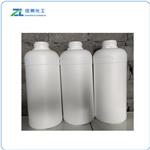
- $200.00 / 1kg
- 2024-04-25
- CAS:42822-86-6
- Min. Order: 1kg
- Purity: 99%
- Supply Ability: 20ton
- p-Menthane-3,8-diol
-
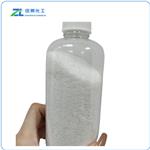
- $100.00 / 1kg
- 2024-04-25
- CAS:42822-86-6
- Min. Order: 1kg
- Purity: 99
- Supply Ability: 5000
- p-Menthane-3,8-diol
-
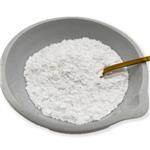
- $10.00 / 1kg
- 2024-04-02
- CAS:42822-86-6
- Min. Order: 1kg
- Purity: 99%
- Supply Ability: 5000 Metric Ton/Month




